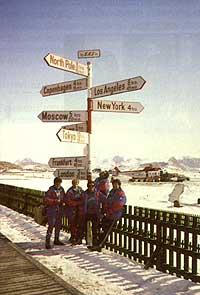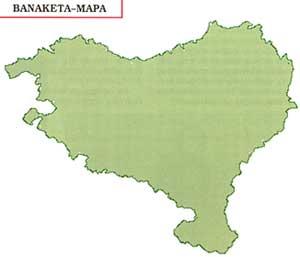Lapland: a territory with a hard and strong life
1991/12/01 Mujika, Alfontso - Elhuyar Fundazioa Iturria: Elhuyar aldizkaria
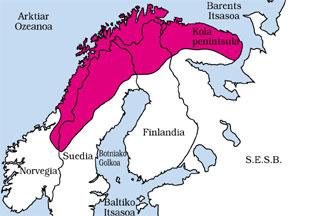
This is explained by the Laponians (or sames, with their word of self-designation).
Lapland is located in northern Europe. To the east it extends to the Russian Cola peninsula, on the edge of the White Sea, and in the west it encompasses Finland, Sweden and northern Norway. High, the limits of Lapland on nomadic people are not too precise. Today, however, Laponians live mainly in territories superior to the Arctic polar circle.
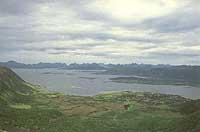
In most of Lapland, the sun does not appear in the sky for many winter days (for example, for 70 days the sun is not seen at a latitude of 72´3). It is a polar night. In summer, on the contrary, the sun does not decrease many days from the sky (for example, 80 days in polar circle, ie 663 – 32’ latitude). It is the midnight sun. The snow covers 8 months a year Lapland and in the high mountains the snow never disappears. On the coast the famous Gulf Stream (marine current of the Gulf of Mexico) breaks the climate: the average extreme annual temperatures on the coast are -17°C and +18°C at a latitude of 70°C and the sea is not frozen (at the same latitude or even at smaller latitudes, such as Alaska or Greenland the sea freezes). Inside, in similar latitudes, the extreme average temperatures are -42°C and +27´. Summers are very short and hot (in summer the temperature in Lapland is very similar to that of the Mediterranean).
The Laponians today
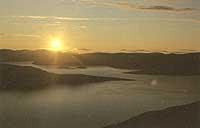
It is not easy to know how many Laponians are, since statistics are not very reliable and different parameters can be used to define who is the span (language, race, ...), but it is estimated that they are about 40,000. Nearly two-thirds of them live in Norway, about 10,000 in Sweden, about 4,000 in Finland and about 2,000 or 3,000 in the Soviet Union.
According to habitats and activities, Laponians are currently divided into four large groups. The largest group is formed by the Laponians of the coast. They live in the fjords of northern Norway. They are fishermen and farmers. They have no snow hut and are sedentary. They are fully integrated into modern Norwegian society.
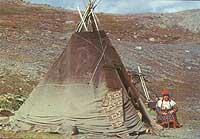
Another group is that of forest laps. They live in Sweden. Hunters, fishermen and farmers with small reno cabins. They are not nomadic but perform small migrations. They are integrated into modern society. In this group, Russian Laponians, called skolt, can be included. Skoltek forms a subgroup among the Laponians (different dress, religious orthodox, peculiar traditions...), but the two world wars have suffered a great change in their lives.
The third group is made up of the Laponians of the rivers. They live on the shores of lakes and rivers of northern Scandinavia. Its main activity is fishing, especially salmon fishing. They are also dedicated to agriculture as complementary activity. They are sedentary.
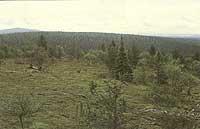
The last group is that of the mountain thieves: followers of the ancient Laponians, “authentic” thieves who care for and breed the snow deer. The two annual reno migrations force to have nomad. They account for only 10% of all Laponese and live in regions of the interior of Norway, Sweden and Finland. The snow deer, grouped in large groups, leave for food to the north in spring and return to the pastures of the south in late summer. The Laponians lead them through concrete and adequate roads. The Laponian has three great elements of resistance and handling of the deer: the dog, the skis and the loop. They feed on the snow deer to feed themselves and feed themselves: they feed on reno or smoked meat and milk. On the other hand, they use the renowned skin to build the conical tents of the camps and to make boots, pants and clubs.
The balance of the economy of Lapland, based on the growth of the reindeer, has drastically changed with the incorporation into the market economy. More and more young laps are incorporated into modern society, leaving their culture and traditions. The life, culture, and language of Laponians who have endured thousands of years are now in danger.
Climate and vegetation
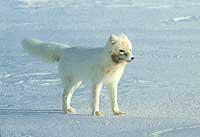
To be able to live in these harsh climatic conditions, animals and plants have developed a wide variety of adaptations. However, although the general climatic conditions of Lapland are somewhat earlier, the different geographical regions, height, orientation, etc., generate many and very limited microclimates: coast of deep fjords, mountain range between Norway and Sweden, central plateau of Lapland curly, swampy areas, forest areas... ... Therefore, the vegetation varies from place to place.
In the tundra, only the lichens, mosses and some junks hold the soil by long and solid roots. Nothing more grows. On another level, at the edge of the forest, other plants appear that do not achieve a good development: thick lichens (which feed in winter by the reindeer) and different types of heather. On the other hand, the trees that best bear the conditions of the cold regions of Lapland are the nano urki ( Betula nana ) and the mountain birch ( Betula tortuosa ). They are small trees, very ramified and with strong roots.
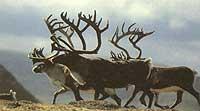
Its rapid growth and adaptation to the winter conditions make the conifers grow in impossible zones of growth, so they indicate the limits of the territory that covers the forest in the north and in high zones. In its trunk grows a brown lichen called Parmelia. This lichen grows where it is clear, although the temperatures are very low. In winter they only grow on the part of the trunk that is not under the snow. Therefore, the lower limit of lichen in the trunk indicates the average height of snow in winter.
Through birch does not grow grass, but plants such as moss, heather, cranberry... At a lower height there are coniferous forests that need more time to grow than birch trees. The fir is very abundant, but it often grows irregularly due to the weight of the snow. The deterioration of the spruce tip is normal and the new trunk is developed by some of the lateral branches. Therefore, instead of the typical trunk spruce, the erroneous names of two trunks are very frequent.
Fauna of Lapland
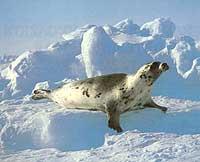
The snow deer ( Rangifer tarandus ) is undoubtedly the most known and abundant animal in Lapland. The adaptability of this animal is enormous. Its coat has an average thickness of 4 cm, a perfect insulator. They live from parallel 60 towards the north, being able to reach parallel 80. The toad is wide, allowing it to move easily over the snow and mud. Migrant, in autumn it heads south, always grouped in large groups.
On the coast are the common seal ( Phoca groenlandica ) and the marmolaire seal ( Phoca hispida ), but they are not very numerous. The terrestrial mammals include foxes and bears. Its body is thicker and its extremities smaller than that of other more temperate regions of Europe. They keep heat better with thick body and lose less heat with small members. On the other hand, the fox, hare and armiño of the bow is fought in winter to be able to camouflage well in the snow. The same applies to birds that do not migrate, such as lizards.

When reporting on the fauna of Lapland, no insects can be omitted. From the beginning of thaw and thaw to the first snowfall, mosquitoes are the most prominent feature of summer in Lapland. Every day millions are born in swampy lands. The tube is almost as long as the body and the females grab the animals, especially the reindeer (even the people), to absorb the blood. Their bites are not dangerous (they do not transmit any disease), but they are irritating that they can get crazy groups of snow deer.
Laponians and lapel
Two are the most outstanding physical characteristics of Laponians: their small size (1.55 m. average between men and 10 cm. less among women) and their skull very small and especially. The hair is generally soft and dark. The face is pear-looking, with slightly salient cheeks and the oil-colored skin. Usually brown or brown eyes. So physically they do not resemble their neighbors, the Nordics.
They have a demanding vision, even in old age. In their blood system they have anastomosis (uncommon junctions between arteries and veins), which allows them to better withstand low temperatures. They are strong and alive, race agile and high resistance (in 1883 the Norwegian explorer Amundsen sent two thieves to explore the internal territories of Greenland and when they returned claimed to have traveled 460 kilometers over ski in 57 hours. No one believed them, but one of them participated in a Swedish race and won: They spent 220 km in 21 hours! ).
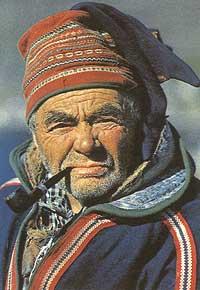
The origin of the Laponians is not clear, but it seems to be that the origin of C. They arrived in Scandinavia around 2000 or, more specifically, the territories in which they currently reside. They arrived in the south, fleeing the attacks of other peoples.
It belongs to the group of fine-language Laponiera, which is a branch of the Ural-altaiana linguistic family. The best known languages of this branch are suomial (Finnish) and Hungarian. Laponese has three main dialects, quite different from each other. The northern dialect is the most widespread: Two out of every 3 laponians do so in iparlaponés. In the eastern lapel it takes place towards the east of Lake Ina (Northeastern Finland and Russia). Finally, the surlapon, the least extended, is in Norway Media and Sweden.
The phonetics and grammar of laps are complex (for example, they have 9 personal pronouns: 3 singular, 3 plural and 3 dual, that is, we two, you two, they two). The lexicon, as expected, is very rich in things and concepts typical of his lifestyle (metereology, fauna and renown, for example), but scarce in abstract concepts.

Gai honi buruzko eduki gehiago
Elhuyarrek garatutako teknologia




